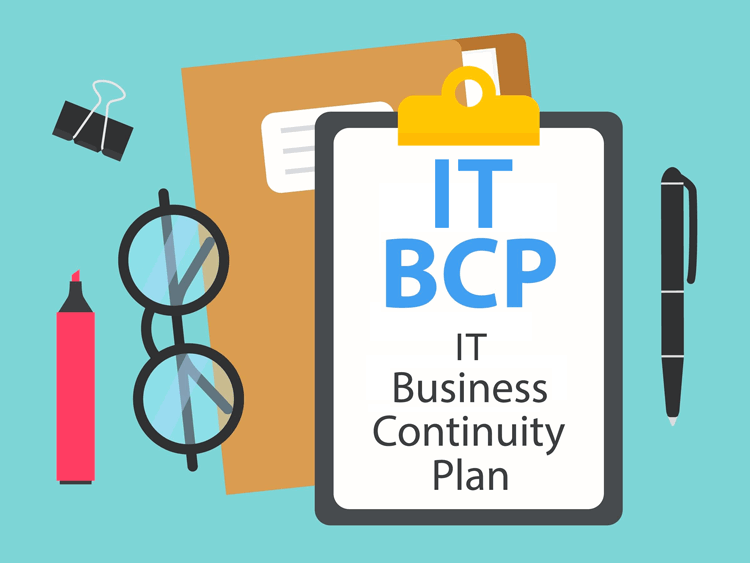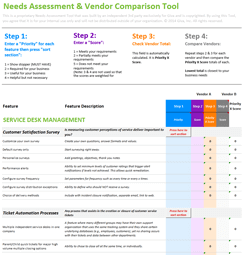What Are the Most Important Key Performance Indicators (KPIs) & Metrics for IT Operations Managers?
IT and IT Service Management (ITSM) is a data-intensive business and operational function. In most cases, everything that can be measured is measured in some way.
Key Performance Indicators (KPIs) and other metrics play a mission-critical role in the management of an IT team. It's also the main way IT operations managers can show senior business leaders how their team is performing.
Performance-based success metrics are the most effective method for IT leaders to retain or increase IT budgets, headcount, and invest in new software, tools, and transformation projects. Business leaders set goals and IT operations managers implement them with the talent and tools available.
KPIs and other metrics demonstrate how an IT team is performing against those goals and objectives.

What Are Key Performance Indicators (KPIs) and Metrics, And Why Are They Important?
In modern organizations, data is everything. Business and operational leaders and managers make decisions based on the data they receive.
KPIs and other data-based key operating metrics are crucial to the smooth functioning of any IT team, ITSM function, or IT department.
When IT teams are working with external providers and vendors, such as Software as a Service (SaaS), and cloud storage or security providers, KPIs and Service Level Agreements (SLAs) are equally useful for measuring performance.
Internally, KPIs, SLAs, and other metrics in IT operations show IT operational managers:
- How the IT team/function is performing against operational goals and objectives
- How closely IT performance is aligned against business goals and objectives, including SLA adherence
- How budgets are performing against budgetary allocations
- The success of new software and IT functionality against operational targets
- The impact of IT transformation projects
- Numerous other measures of success
For IT operations managers, this can feel like drinking from a big data firehose. The trick is identifying the most important KPIs and metrics so that you are focusing operational goals and targets on the right activities.
In this article, we dive into the different KPIs and metrics in IT operations and take a closer look at the mission-critical metrics that operations managers need to track, and how to track them.
Different Key Performance Indicators and Metrics in IT Operations
Before we go into KPIs and IT operational metrics in more detail, we need to remember that the two aren't the same. Although they're often used interchangeably, there is a difference between a KPI and other, more strategic metrics.
KPIs are ways of measuring an IT team's day-to-day work. KPIs are a specific category of metrics and are often rolled into SLAs.
KPIs measure an IT team's performance against set objectives and targets. Other metrics measure any data a company uses to assess whether projects are adding value, resources are being used effectively, and IT teams are contributing to operational goals and targets.
Let's dive into the top 3 KPIs and data-backed metrics that IT operations managers need to monitor.
-
Strategic IT Operations KPIs
Strategic IT operations KPIs are a measure of the overall performance of an IT team and the software used to support an organization. Naturally, there are dozens of ways to measure strategic goals, depending on the objectives of senior leaders. Here are a few of the most popular:
- Software or Application Performance: Measuring loading or rendering times for software applications within a company's tech stack.
- Software or Application Availability: A way of measuring and monitoring the uptime and availability of software and applications within the tech stack.
- Production Incidents: How many production incidents have there been, and how severe are they? What's been the impact on the business? Were any caused by cyberattacks, and what can we learn from them?
- ITSM and Service Desk: Measuring service availability and resolution speed at a strategic level.
-
Efficiency KPIs in IT Operations
IT teams need to be efficient by default. If an IT team isn't working at peak efficiency, with a clear and defined strategic playbook, then an entire organization will suffer. IT efficiency impacts everything, from customer service to sales, to whether an organization is safe from cyberattacks.
Although there is no one-size-fits-all list for efficiency KPIs, these are some of the most common that most IT teams track and monitor obsessively:
- Service Availability: In the vast majority of cases, IT teams and SaaS vendors aim for 99.999% service availability, also known as uptime. It's a KPI that is written in stone in service-level agreements. Every IT system that an organization relies on, especially communications and security, needs to be operational 24/7, except for occasional downtime when software or servers are being upgraded.
- Mean Time to Resolve (MTTR): Another key SLA-based metric is the time it takes for IT teams (especially those on IT help desks) to resolve service tickets. Integral to this is whether a ticket was resolved within agreed SLA timescales or not and, if not, whether there's a good reason for a support request being outside of SLA KPIs (e.g. is this a complex query, and was a third-party needed to resolve it?).
- Mean Time Between Failure (MTBF): Unfortunately, as every IT operations manager knows, systems failures happen occasionally. This KPI measures the time (in weeks or months) between one failure and another.
- Mean Time to Failure (MTTF): This KPI measures the mean or average time IT systems are running at the normal level of uptime (e.g. 99.999%) after the last issue, or system downtime, was resolved.
- Total Support Tickets vs. Open Tickets: A way of measuring — usually through an IT help desk KPI/metrics dashboard — the number of support tickets that come in (daily, weekly, monthly, and quarterly) compared to the number that has been closed.
- Ticket Close Rate (integral to the above KPI): How many tickets have been closed? This shows the number of incidents that have been resolved. Open tickets that are unresolved could be outside of agreed SLAs, and therefore something an IT operations manager needs to watch closely.
- Net Promoter or Customer Satisfaction Scores (NPS/CSS): NPS or other customer satisfaction scores are a measurement of how happy, or not, internal or external customers are with IT support services. High scores show that the IT team is doing well. Lower scores show there is room for improvement, either with individual agents or the whole team.
- Average Handling Time (AHT): A KPI that originates from telephony-based customer service centers, and is now used among IT service management teams. Even if IT help desk staff aren't taking calls from internal customers, this is a way of measuring how long it takes for a ticket to be resolved.
- First Call (or Ticket) Resolution: Another KPI that comes from the world of customer service operations. Whatever the issue, people want a problem resolved after the first time they contact IT service desks for help. No one wants to have to open another ticket. IT operations managers need to ensure the majority of support tickets are being resolved after the first point of contact.
Of course, there are numerous other IT efficiency metrics that an IT operations manager can track. In our experience, these are the most common and important when assessing the overall performance of an IT team on a regular, daily, and real-time basis.
-
Other IT Operational Key Performance Indicators
IT operations managers can get overwhelmed in metrics and key performance indicators. It's important to only focus on the ones that make an impact, or that senior management wants tracking. Here are a couple others you should monitor carefully:
- PaaS & IaaS Uptime: Most large organizations rely on complex layers of cloud-based platforms and infrastructure services to manage hybrid and multi-cloud operations. Measuring uptime and other performance indicators (speed and other metrics) is essential to ensure everything is running smoothly.
- IT Security Metrics: How are our IT security measures performing? Are attack rates up? How many cyberattacks are we fighting against, and has there been an uptick or downtick in attacks in the last 30 days?
Most Important Metrics for Operations Managers
Most IT teams don't struggle with finding data and metrics to track and monitor. Quite the contrary, IT operations managers can be overwhelmed with data and KPIs.
It's important to know what you should be measuring, to avoid missing the signals within the noise of data you can tap into. Only focus on KPIs that make a difference, such as uptime, ticket resolution times, customer satisfaction, and other performance-based metrics that impact your team and the organization.
If you are new to this or are inheriting someone else's dashboard, start small and simple. Don't overload yourself or the team with too much data. You don't want to be sifting through 100-page reports looking for a nugget of actionable intelligence. Instead, you need a dashboard that tracks mission-critical metrics you can take action on quickly, and then scale KPIs according to operational and business objectives.
Key Takeaways: Best Way to Track IT Operational Metrics
For IT operations managers, the best way to track IT operations metrics and KPIs is by using a real-time, cloud-based IT Help Desk and ITSM management software, such as Giva.
Giva is one of the market-leading IT software solutions for operations managers. It comes with game-changing analytics and customizable reports, so you can focus on tracking the right metrics and KPIs to manage your team and elevate them into KPI operational excellence. Giva's software comes with a Knowledge base, an end-user self-service portal, customer satisfaction surveys/success centers, hardware and software asset management, change enablement/management, and numerous other features. Everything we provide is built on a reliable help desk ticketing solution. So you have everything you need in one place and can monitor an IT team's performance against KPIs while seeing how individuals are doing at a granular level.





